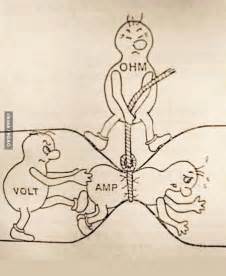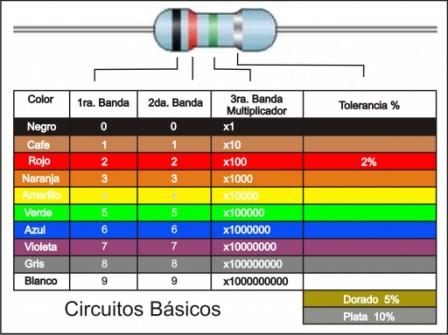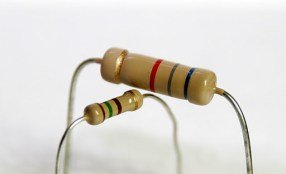MiniE 2.1 Passive elements: Resistance // Let’s learn: Basic Electronics. [eng]
Recap of the previous MiniE
Greetings, in the previous MiniE: I made the introduction to the passive elements, these being elements that need an external excitation to perform its function. And now we know that there are 3 of these: Resistor, capacitor and electromagnetic coil.
-If you have not yet read it, I invite you to read it, I assure you that you will find it useful:
Needless to say, I introduce you to our first passive element.
Next I define that it is an electrical resistance, if you only want to know what is a "resistance", go down to the next title.
The electrical resistance
For you to understand me quickly and easily, there are many analogies, but this seems more casual and is something you can do or imagine. (And the only one that comes to my mind for the moment)
Imagine that: You are in physical education class and the coach (yes, that teacher who always tells you to run but does not move a finger during class) tells you to run 100 meters, but there are many obstacles along the way that prevent you from going in a straight line. Then, you always ran at your maximum speed and when you reach the goal, you feel more tired, and sweating a lot.
In this case:
The current: it's your speed, it never changed in the course of the track.
The voltage: it is your energy, you started with fresh wind and now you feel tired, that is to say there is a differential of potential from the beginning until the end.
The track, or the road: it would be the material (a cable, a pencil, any material) and the obstacles in it, represent the opposition to the passage, for you, from the beginning to the goal.
And you: you represent the electrons, which want to pass from one end to the other.
Therefore, the electrical resistance: represents the opposition to the flow of electrons passing through a material, the more resistance the material (obstacles) have, the more difficult the passage of the current through it. All materials have an electrical resistance, only that some have such high electrical resistance that the passage of electrons does not cross the material.

I will deviate a bit from the subject, and I will clarify something about these materials.
The materials that allow the passage of electrons through them, are called conductors, which in turn depending on their characteristics and conditions to allow the flow of electrons are divided into: Superconductors, conductors and semiconductors.
The materials that do not allow the passage of electrons are considered insulators, although these also depending on the conditions in which they are can allow the passage of current. An example of this would be semiconductors: these are insulators, but if they meet certain factors, such as the presence of a magnetic field, they can become conductors.
The value of the electrical resistance of a material is physically defined by the following equation:

Very interesting, but ... What are resistors, then?
The resistors, is what we call an encapsulation already defined and standardized by the EIA (Electronic Industries Alliance), which is used to add a specific electrical resistance between two points of a circuit. They are manufactured in different sizes, materials, tolerance, shapes, values (between 1 ohm and 10 Mega ohms), etc.
It seems complicated, how do I know how much electrical resistance has a "resistance"?
Here the EIA also standardized several encodings: those of color and alphanumeric.

This is color coding.
Where to get them, which ones can I use to repair my household things?
In any electronics shop, or even, removing them from some old electronic equipment that you do not need. There are several types depending on their size and the area to be applied. The most common in household equipment, which we can extract or add to a circuit with normal tools, are the following:

With this theme I could extend a lot. However, I feel that I already made clear what a resistance is and I presented it to you. Even if they see the MiniE: 1, you can see a resistance in action.
link: https://steemit.com/education/@gg-electronics/minie-1-ohm-s-law-let-s-learn-basic-electronic
I hope you have been interesting the subject, do not forget to check the previous MiniE. And in the end a little humor:

Congratulations @gg-electronics! You have completed some achievement on Steemit and have been rewarded with new badge(s) :
Click on any badge to view your own Board of Honor on SteemitBoard.
For more information about SteemitBoard, click here
If you no longer want to receive notifications, reply to this comment with the word
STOP